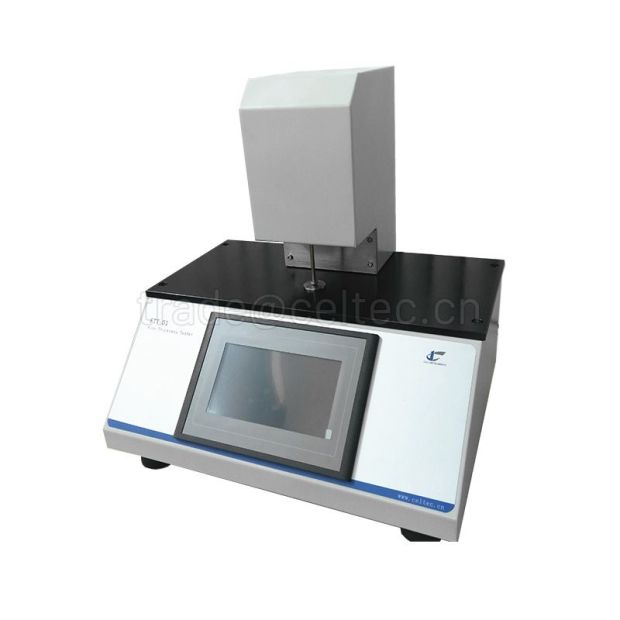Plastic Film Testing: Ensuring Quality and Durability
In today's world, where plastic films are extensively used in packaging, agriculture, construction, and various other industries, ensuring their quality and durability is paramount. Plastic film testing plays a crucial role in verifying the performance, safety, and compliance of these materials. This comprehensive guide delves into the intricacies of plastic film testing, covering various aspects from testing methods to industry standards.

Plastic film testing encompasses a range of evaluations aimed at assessing the mechanical, physical, chemical, and barrier properties of plastic films. These tests are conducted to ensure that the films meet the desired specifications and perform effectively in their intended applications. From measuring tensile strength and elongation to evaluating puncture resistance and thickness, each test provides valuable insights into the quality and performance of the material.
Plastic films undergo rigorous testing to assess their ability to withstand external factors such as temperature variations, moisture, and UV exposure. Additionally, barrier properties such as oxygen transmission rate (OTR) and moisture vapor transmission rate (MVTR) are evaluated to determine the film's suitability for specific packaging applications.
Importance of Plastic Film Testing
The significance of plastic film testing cannot be overstated, especially in industries where these materials are used for critical applications such as food packaging and medical devices. By subjecting plastic films to thorough testing, manufacturers can identify potential defects, weaknesses, or inconsistencies early in the production process, thereby preventing costly recalls or product failures.
Moreover, compliance with regulatory standards and industry-specific requirements is essential to ensure consumer safety and product efficacy. Plastic film testing helps manufacturers demonstrate compliance with these standards, fostering trust and confidence among consumers and stakeholders.
Types of Plastic Film Testing
Plastic film testing encompasses a wide range of tests, each serving a specific purpose in evaluating different properties of the material. Some common types of plastic film testing include:
Tensile Testing
Tensile testing measures the force required to stretch a plastic film to its breaking point, providing valuable insights into its strength and elasticity. This test helps determine the film's mechanical properties and performance under tension.
Puncture Resistance Testing
Puncture resistance testing evaluates the film's ability to withstand puncture or penetration by sharp objects. It is particularly important in applications where the film may come into contact with sharp edges or abrasive materials.
Additional resources:How much weight can a drone carry?
Is a single motor standing desk worth it?
Ultimate Drone Propeller Efficiency Test: Results Revealed
Top Ways to Measure RPM with Your Phone - All Your Questions Answered!
Thickness Measurement
Unlocking the Power of Thrust UAVs: Your Ultimate Guide
Unleashing Power: 20 Thrust Torque Secrets Revealed
Power Quality Analyzer | Power Quality Measurement & Audit
Measuring the thickness of a plastic film is crucial for ensuring uniformity and consistency in manufacturing. Variations in thickness can affect the film's performance and barrier properties, making thickness measurement an essential quality control parameter.
Barrier Property Testing
Barrier property testing assesses the film's ability to prevent the transmission of gases, moisture, and other substances. Common tests include OTR and MVTR testing, which measure the rate of oxygen and moisture transmission through the film, respectively.
Industry Standards and Regulations
In the realm of plastic film testing, adherence to industry standards and regulatory requirements is paramount. Organizations such as ASTM International, ISO (International Organization for Standardization), and the FDA (Food and Drug Administration) have established guidelines and standards for testing various properties of plastic films.
Manufacturers are expected to comply with these standards to ensure the quality, safety, and performance of their products. By following recognized testing protocols and standards, manufacturers can streamline their testing processes and demonstrate the reliability and consistency of their products.
Plastic Film Testing in Practice
In practice, plastic film tester involves a combination of laboratory-based tests, field evaluations, and real-world simulations. Advanced testing equipment and techniques such as infrared spectroscopy, differential scanning calorimetry, and microscopy are employed to analyze the physical, chemical, and structural properties of the film.
Moreover, accelerated aging tests and environmental exposure studies are conducted to assess the long-term durability and performance of the film under various conditions. These comprehensive evaluations enable manufacturers to identify potential issues early on and make informed decisions regarding product design, material selection, and process optimization.
Conclusion
In conclusion, plastic film testing is an indispensable aspect of quality assurance and product development in various industries. By evaluating the mechanical, physical, chemical, and barrier properties of plastic films, manufacturers can ensure product quality, compliance with regulatory standards, and consumer safety. Through adherence to industry standards, utilization of advanced testing techniques, and continuous process improvement, manufacturers can meet the evolving demands of the market and deliver high-quality, reliable products.
Additional resources:How to Calibrate a Stopwatch Calibrator Easily
How to Choose What Is A Differential Signal? A Comprehensive Guide
Time events with a stopwatch on Apple Watch Ultra
Why Power Quality Study and Analysis Is the Best For Your ...
Questions You Should Know about Ultrasonic Hardness Tester
What is the Difference: between Rockwell, Brinell, and Vickers?
Essential Plastic Film Testing Methods for Quality Control

Comments
0